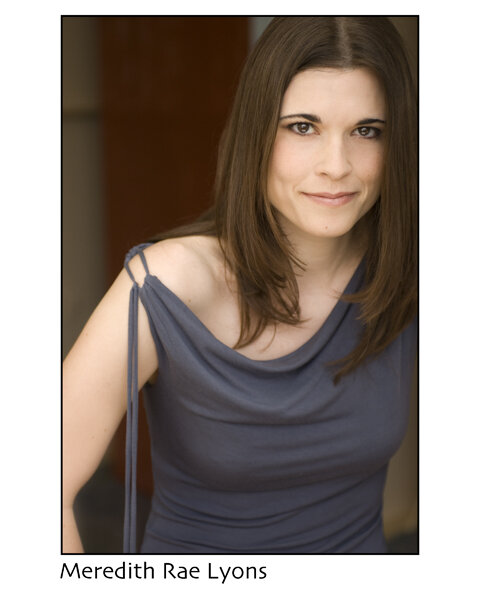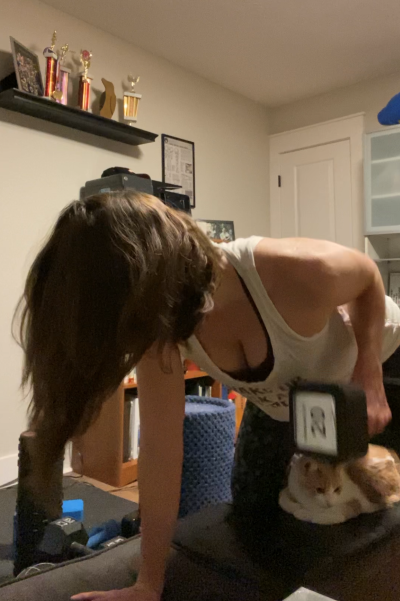Scoliosis
That’s me in the blue shirt circa my 12th birthday. As you can see, I was the epitome of cool.
Most kids probably remember that awful time between eleven and twelve years of age when you’re separated by gender and pulled into a locker room with your shirt off so a nurse can ask you to bend over and check your spine. They warn you ahead of time so that any girls that have started budding can be sure to wear a bra that day. That was the year I learned that, yes, it can happen to you.
As usual when I got home, my parents asked how school was. I must have mentioned the scoliosis test. My dad asked how it went and did I have it. I kind of scoffed and said of course I didn’t have it. The nurse hadn’t said anything, and this is one of those things that existed, but wasn’t anything I was going to have to directly deal with. I remember that moment very clearly. The assumption that it wasn’t going to affect me. I was a shy, nerdy kid and got picked on occasionally, but physically I was fine.
I think my parents got a letter in the mail a few days later saying that I needed to go have my spine x-rayed. I think it was a letter. I don’t remember much other than being shocked that I’d been tagged. It was determined that I had an S curve in my thoracic spine.
My mom took me to the recommended doctor. His bedside manner left much to be desired. The x-ray came back showing that I did, indeed, have scoliosis, and he said I was going to need to get fitted for a back brace. I was a nerdy preteen who already had clothing sensitivity issues (did not like things touching me in certain areas) and so, I started crying. My mom, trying to make me feel better, asked the doctor if the brace would be covered by my clothes so that no one would see it. Without batting an eye he said, “No, it goes all the way up to her neck, it will be quite visible.” He was completely emotionless and barely looked at me. He also informed us that I would be wearing it for twenty-three hours a day, with one hour off to do some exercises.
My mom was furious.
You can see the top half of the S pretty clearly here.
She determined on her own that we were not seeing that man again and got her own recommendations. I remember we saw lots of different people, including one lady that did an experimental TENS treatment that would stimulate the erectors on either side of your spine in hopes that they would keep the spine from curving further. It wasn’t until I was an adult that I appreciated how much work my mom must have done in the early ‘90s to not only find those people, but to make appointments and bring me to each of them. Not to mention the discussions I’m sure she had with my dad afterward that I was completely unaware of, determining which course of action to take. If you want to motivate my mom, piss her off. (Just kidding, Momza! Or am I…?)
We eventually settled on a doctor at Ochsner in New Orleans. He pointed out that my curve was 32 degrees. Were it 30 degrees, I would merely be under observation, rather than being shoved into a brace that immobilized me from the neck to the hips for 23 hours a day until I stopped growing. He agreed that we could continue to monitor the curve by having me come in for x-rays once a month.
Eventually the curve did progress, and it was determined that I was going to need a brace. However, this doctor felt that I’d be fine with a brace that started under my armpits and traveled down to my hips. He also felt that eight hours a day would be fine, so I mostly wore it when I was sleeping. The concern, he said, was not so much the curve getting deeper—although we certainly wanted to avoid that—but the curve changing direction and encroaching upon my lungs. By this point in time, I was used to the idea, so although I certainly didn’t enjoy it, I was no longer hysterical. I wore the brace until I was fourteen. At which point, the doctor was reasonably sure that I had stopped growing and said I could discontinue the brace.
One of my early acting headshots. That thing with my shoulder? That’s not on purpose. That’s just how it rests.
From that point on, scoliosis became one of those things I lived with. To say it hasn’t affected me since then would be a lie. It’s more like it’s affected me so long that I unconsciously work around it. One small example: I cannot wear horizontal stripes. If you put me in horizontal stripes, either my boobs will look lopsided or my shoulders will. They literally draw a line across my body and point out the problem. For this same reason, I tend to gravitate toward V-neck shirts or tanks.
When I was younger, my back used to hurt more often. In college I drove a Camero, and the seats were just perfect for me to wedge my right arm behind the passenger seat while I was driving. It would hold my shoulder back and ease any discomfort. Later on in college, I finally ventured into the weight room. Weight training helped. I still throw weights around three times a week at home. I’m convinced it’s what keeps me from constant back pain.
I’ve never minded anyone seeing my curve. It hasn’t stopped me from wearing bikinis or backless dresses, or running outside in nothing but a sports bra and shorts. I do have a favorite shoulder though. My ‘tilted’ shoulder tends to make me look weird in photographs. (Probably to no one but me, but it’s VERY apparent to me.) So I prefer to video and photograph myself from the left side. Sometimes I can’t though, and then I usually have to do more takes so that I can hold my shoulder in a way that works for my self-image. Other than that, visually it doesn’t bother me too much.
You can see it pretty clearly in this picture, but most people are just looking at the cute kitten that I’m holding. Look at Cloud!
I tend to do dumbbells over two-handed weights for the most part to make sure both of my arms are working. The muscles on one side of my spine are shortened, and therefore naturally weaker, so the stronger side will compensate if it’s given the chance. I’m sure that being asymmetrical has affected me in ways that I’m unaware of. If you’ve spent as much time in physical therapy as I have, you’ll know that a tight hip that’s unaddressed for years can result in ankle pain so bad you can’t walk. Everything is connected. I’ve been doing my best. I’d like to think that as active as I’ve been, and the amount of time I’ve spent learning how the body works, has helped me be a bit more self-aware in this regard.
Most people don’t notice it. Physical therapists, yoga teachers, personal trainers, massage therapists, and some doctors will see it right away. I’ve maybe lost one or two acting gigs because of it—one in particular wanted really toned women that they could paint something on their backs for some ad, I sent a picture of my spine to my agent and didn’t hear anything else about that opportunity—but as a whole, people don’t care.
I’m aware that—like everything else—this may affect me more as I get older. So, I assiduously keep up with the strength training. When I’m walking on the treadmill for work, I make a conscious effort to drop my shoulders down and back occasionally. I’m doing my best.
Gotta train the upper back. Even if cats insist on joining you.
A few years ago, a friend of mine posted that it was Scoliosis Awareness Day or something. I’d had no idea. I posted a picture of my curve on Instagram for funzies and was even more shocked by how many people talked to me afterward about how amazed they were that I did everything that I did and they had no idea I’d had it. Is it weird? I wondered. I had a group fitness director at a very prestigious gym that I auditioned for tell me how inspiring it was that I had accomplished all I had in spite of having scoliosis.
It never occurred to me not to do things because I had scoliosis. No one ever told me that there was anything I might be unable to participate in. I’m still not quite convinced that I’ve done anything impressive, other than absorb the realization of “Anything can and WILL happen to you,” as a twelve-year-old, but just in case, I thought I’d throw this out there.
What if we just never told anyone what they were or were not capable of and let everyone figure it out on their own? What if we just got our of their way and let them be?
Did you ever read James Herriot stories? I loved those as a kid. I remember one where he was a vet to a farmer who was against euthanizing an animal unless they were in great pain and not going to recover. Something happened to one of this farmer’s dogs and the dog lost the use of both legs on his left side. Dr. Herriot suggested putting him down because how would the dog function? The farmer determined that since the dog was in no pain, he would give him a chance. The next time the vet visited, that dog was racing through the fields, two limp legs brushing against the grass on one side, happy as can be.





